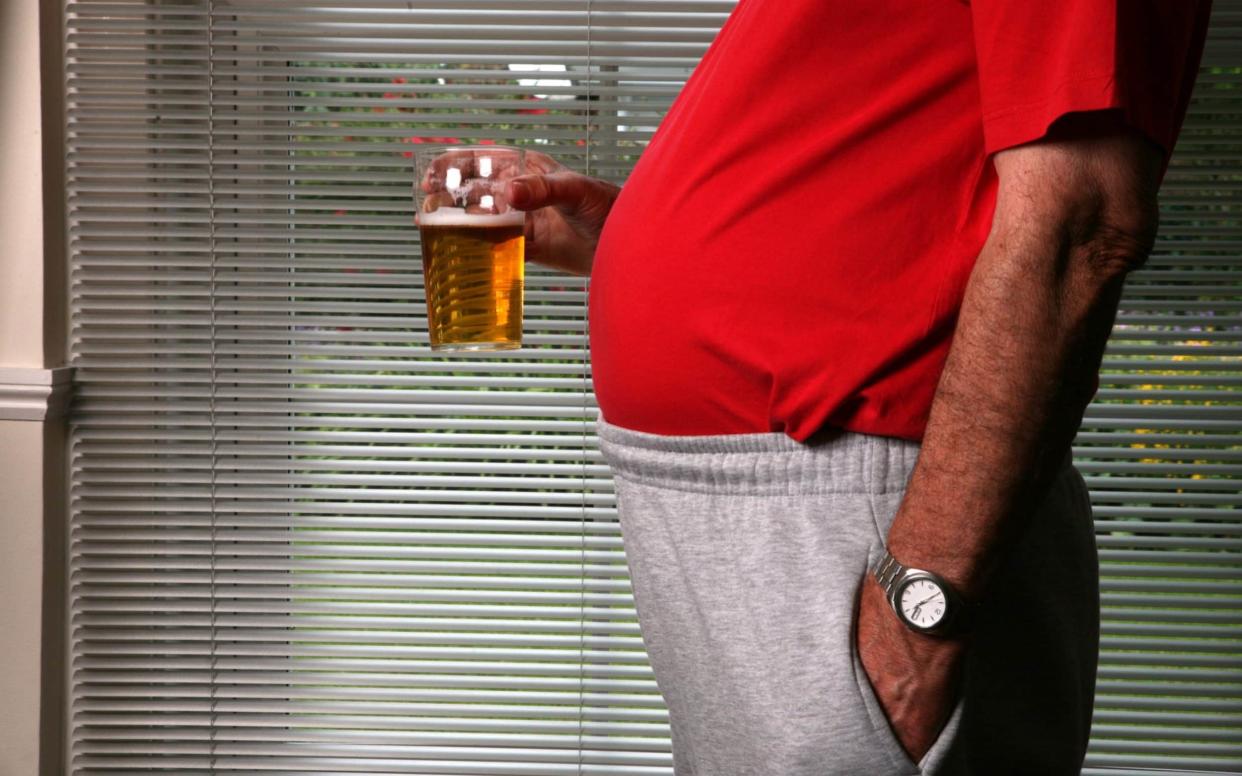Heavy drinking adds four centimetres to your waistline, UCL study finds

Heavy drinking adds four centimetres to your waistline, warns a new study.
Researchers found excessive boozing into older age was linked to a 1.5 inch larger waist and increased risk of a stroke in men.
It was also associated with higher blood pressure, poorer liver function and a higher body mass index (BMI) in later life.
Scientists at University College London (UCL) studied 4,820 adults aged 59 to 83 - three-quarters of whom were men.
Participants were split into groups depending on their lifetime drinking patterns.
Heavy drinkers were identified using the Alcohol Use Disorders Identification Test for Consumption (AUDIT-C), a standard screening tool for GPs.
The test assesses how often you drink, how much you drink, and how often you binge - have six or more drinks.
Someone who has three or four drinks, four or more times a week, would score positive as a hazardous drinker.
Participants completed the AUDIT-C retrospectively for each decade of their life from age 16 to 19, to 80 and over.
The team then categorised their lifetime drinking into four groups: never hazardous drinker, former early hazardous drinker (stopped at age 50 or after), current hazardous drinker, and consistent hazardous drinker (during every decade of their life).
More than half of drinkers had been hazardous at some point in their life - with 21 per cent current hazardous drinkers and 5 per cent consistent.
Heavy drinkers were mainly men, predominantly white, and likely to be in senior level jobs.
Results showed excessive alcohol consumption over a lifetime was linked to higher blood pressure, poor liver function, increased stroke risk, a larger waistline and BMI in later life.
This was the case even if you stopped drinking heavily before you turned 50.
Lifetime hazardous drinkers had significantly larger waistlines and BMI than those who had never been hazardous drinkers.
Heavy drinkers who stopped aged 50 or after had a 1.17 centimetre larger waist than never hazardous drinkers.
But current and consistent hazardous drinkers had a waistline that was 2.44 and 3.85 centimetres larger respectively.
Stopping drinking at any point in life was likely to be beneficial to overall health.
Study first author Dr Linda Ng said: "Alcohol misuse, despite the common perception of young people binge drinking, is common among older adults, with alcohol related hospital admissions in England being the highest among adults aged over 50.
"Previous studies have focused on single snapshots of consumption, which has the potential to mask the cumulative effects of drinking.
"This study raises awareness of the effect of alcohol consumption over the life-course."
Dr Ng added: "This suggests that the longer adults engage in heavy drinking the larger their waistline in older age. That is why it is beneficial, along with other health benefits, that adults reduce heavy drinking earlier rather than later."
Senior study author Professor Annie Britton said: "Despite high prevalence of stroke and liver disease steadily increasing in the United Kingdom, heavy drinking remains common among older adults.
"Early intervention and screening for alcohol consumption, as part of regular check-ups, could help reduce hazardous drinking among this demographic."
The findings were published in the journal Addiction.


